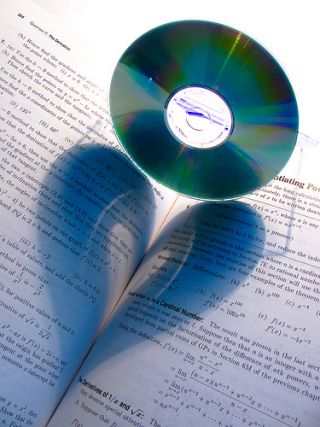
Pornography
Required College Reading: Pornography?
Is it legitimate to require college students to view pornography for class?
Posted September 6, 2012

L'amour toujours, Blair25
Here is a “Back to School” worry that hadn’t occurred to me until I talked with my friend last week. “My daughter is taking a course where she’s required to watch three pornographic movies and read one pornographic book.” Her daughter is beginning her sophomore year of college. My friend enumerated her concerns. One: She wasn’t excited about her daughter watching porn. Two: She didn’t want her daughter contributing to the economics of the porn industry by paying for porn. Three: She was suspicious that there wasn’t a legitimate academic point of these course requirements. While she had concerns, she wasn’t planning on doing anything. She’s no helicopter parent.
My friend’s non-standard “Back to School” question raises a nest of broader questions about the boundaries between scholarly research and the consumption of pornography. Some of the important questions connected with pornography are social-scientific. For example, “How does pornography affect the viewer?” [See Pornography Splits Men's Consciousness.] Others are philosophical and ethical. For example, “What is the difference between pornography and erotica?” On top of those questions there sits an ethical question about research and scholarship: If some of these theoretical and social questions cannot be investigated without either the investigator or the experimental subjects actually consuming pornography, where are the ethical boundaries between legitimate research and ethically questionable practices?
A keyword search of electronic full-text publications in the American Psychological Association database yields 112, 566 listings related to pornography. One hopes that the researchers who produced all of those studies did so in ethical ways (Human Subject Review Boards are designed to ensure this).
But consider Annie Sprinkle, who deliberately blurs the lines between pornography, performance art and research. By making films that discuss pornography while enacting it she gets to be a porn star, a performance artist, and a researcher all at the same time. For a couple of decades people have paid to watch her masturbate, douche and urinate. In the 1990s, scholars wrote about her with studied seriousness: “Annie’s explicit visual presence is complemented by her intense diaristic, instructional and seductive verbal activity.” [Chris Straayer, “The Seduction of Boundaries: Feminist Fluidity in Annie Sprinkle’s Art/Education/Sex,” in Dirty Looks: Women, Pornography, Power. ed. by Pamela Church Gibson and Roma Gibson. London: British Film Institute, 1993. 165.] “Why would anyone do this?” Annie’s performances ask. “Why are you watching?” her performances also ask her viewers. Her book Annie Sprinkle: Post Porn Modernist earned her money for ruminating about such questions. Scholars get paid almost nothing to write articles that “construct” her as a serious artist whose art “deconstructs deconstruction.”
Annie Sprinkle is still out there on the web: Wikipedia, Facebook, a website that lists her as “Ph.D., Artist and Ecosexual Sexologist.” The log in for the website tells you you’re required to be 18 to view it.
Research? Porn? Sexecology and Post-Porn (whatever they are)?
What if your college-student daughter or son were required to log into Sprinkle's website and write a 10-page paper about it?

